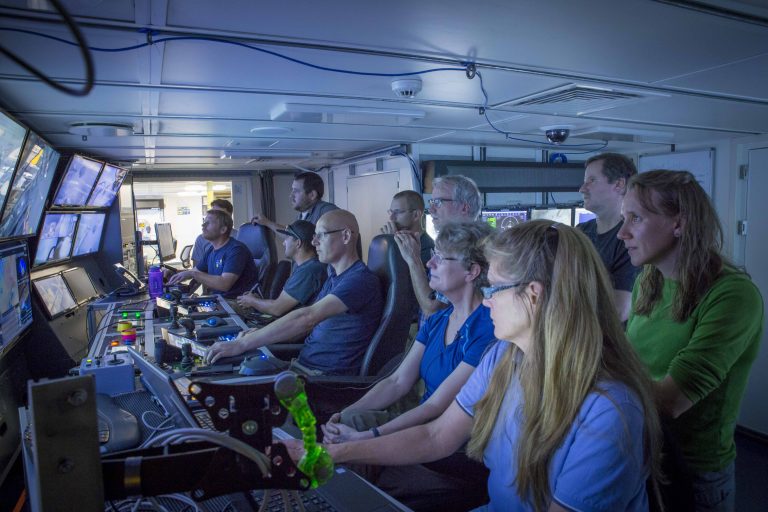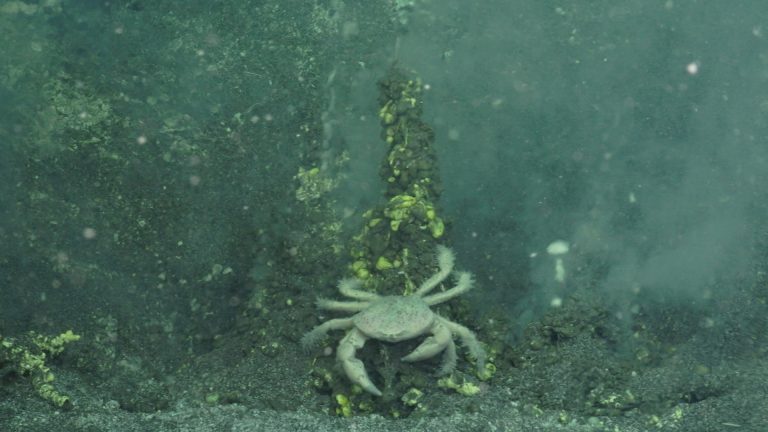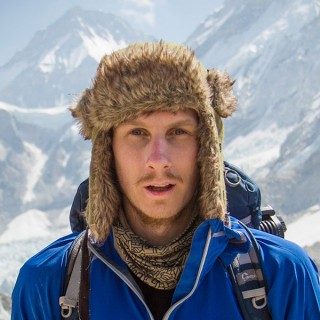After two cancelled dives in the back-arc, we transit to our northern-most destination: Daikoku seamount. The winds and seas are calmer there, and it is a chance to revisit a fascinating underwater volcano. We get the confirmation we have been hoping for at 6.30am – conditions are good enough and ROV SuBastian is ready for its first dive.
 Heading North
Heading North
The ROV team has spent months preparing for this moment, and it shows. They handle the waves with delicate control and make a perfect launch. Our dive site at Daikoku is 400m below the surface, making it one of the shallowest targets on the cruise. This means there is not much time to switch from launch mode to drive mode, and everyone takes their hard hats off quickly, heading for the control room. In no time the space fills with pilots, camera operators, and eager scientists.
It is a great moment as SuBastian descends through the water column to reveal a smokey underworld. We have had very choppy conditions for two days – our seasick stomachs and green-tinged faces speak to that – but the water down here seems calm. We start to get a glimpse of another world in stunning 4K resolution.
The animals here don’t struggle with seasickness, they don’t even struggle being next to acidic vents with a pH of 5! It’s incredible to watch these animals breezing through the seafloor near these hydrothermal vents. Our first site is a haven of sulphur crust and microbial mat, teeming with so many flatfish that they just swim right over each other.
At Work Underwater
We survey the area with our science camera and begin our first task: Extreme fishing- a kind you’ve never seen before. The researchers try a variety of approaches to ensure the capture of good samples. The suction sampler proves tricky to master, but SuBastian and the pilots finally make the catch! Verena Tunnicliffe has also prepared a fish trap with cat food as bait. This set-up is purrrfect (so sorry-couldn’t resist) and proves a swift success, ensuring collection of all the samples needed. These fish samples are essential to understand the hydrothermal ecosystem. What is the food chain down here? How do these animals survive in these harsh conditions, thriving in huge numbers on the seafloor? These animals have made a home for themselves in an extremely difficult environment, but they should also adapt to life back on board without too much fuss, so we can get a better look at them up close.
The ROV moves up to the edge of a fissure emitting bubbles and smoke: the first sulphur chimney we have seen here. It is caked in yellow sulphur and emits beautiful white bubbles. Some local crabs wander by, and climb right up. They have no problem with the 70°C waters and seem perfectly content. This is a great chance to use the scoop on the manipulator arm and bring home the chimney for closer inspection.
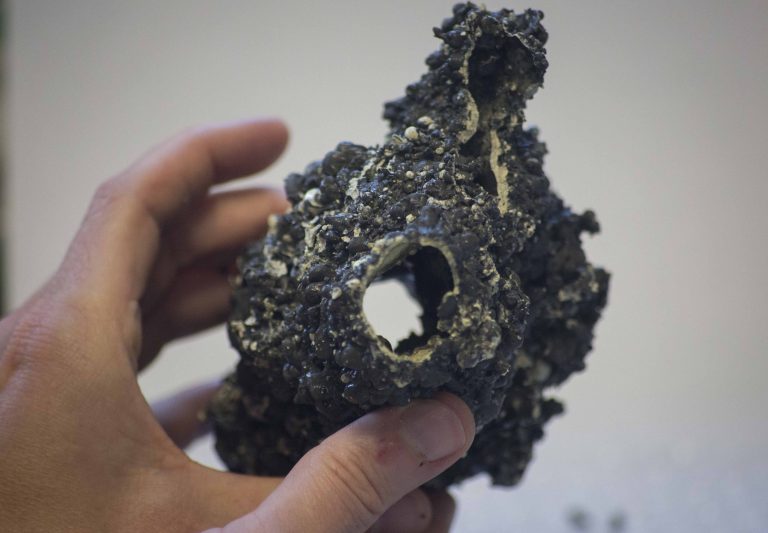
The sample will give us the trace element composition of different layers of the chimney, providing a great new insight into how these hydrothermal vent systems are plumbed in.
The team continues taking fluid samples, temperature probes, and filming sites of interest. After completing these and additional tasks, the team decides to call the day and make plans to return to the surface. This will give the crew time to inspect and clean, and ensuring everything is ready to go again tomorrow.
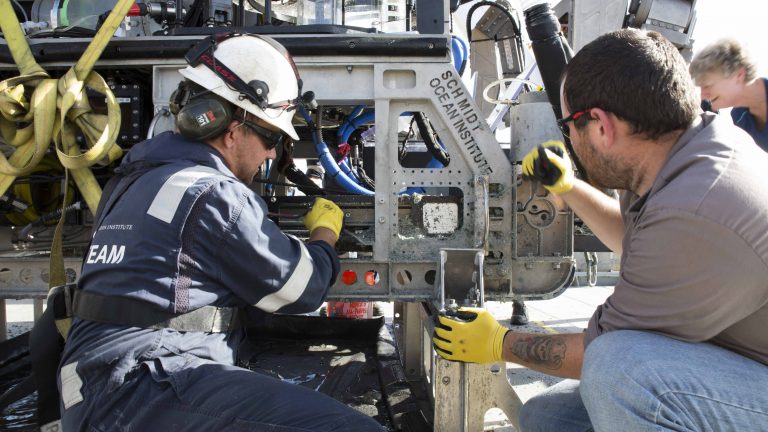
The recovery process is smooth, and once the ROV is back on deck the main thing we notice is the smell – you don’t need any expensive sampler to detect the sulphur here! The crew starts cleaning away and all is soon cleaned off. All the samples taken during the dive are into transported into the labs to begin processing. There is not much time to unload everything, reset, and prepare to go again at first light. This has been an incredibly successful first dive for SuBastian and the team, so everyone is thrilled and excited to go again. You can follow along on the livestream at home as we dive at the same site again: collecting more flatfish samples, more vent fluids for chemistry, and hunting for tubeworms!
